02/04/2024 --- Prototyping and Design
The reason why I'm doing Omnidirectional Quadrupeds is simply because it is a concept that has been heavily centralized around construction and military use. The designs I demonstrate today will be to test if these Quadrupeds would be better suited in other fields or if their current use is the most fitting for their capabilities.
Prototype 1
The design you see below is a spherical mobile robot that uses sphere wheels to rotate in the appropriate direction it needs to move. However, this idea has limitations; the machine won't sail smoothly and move roughly.
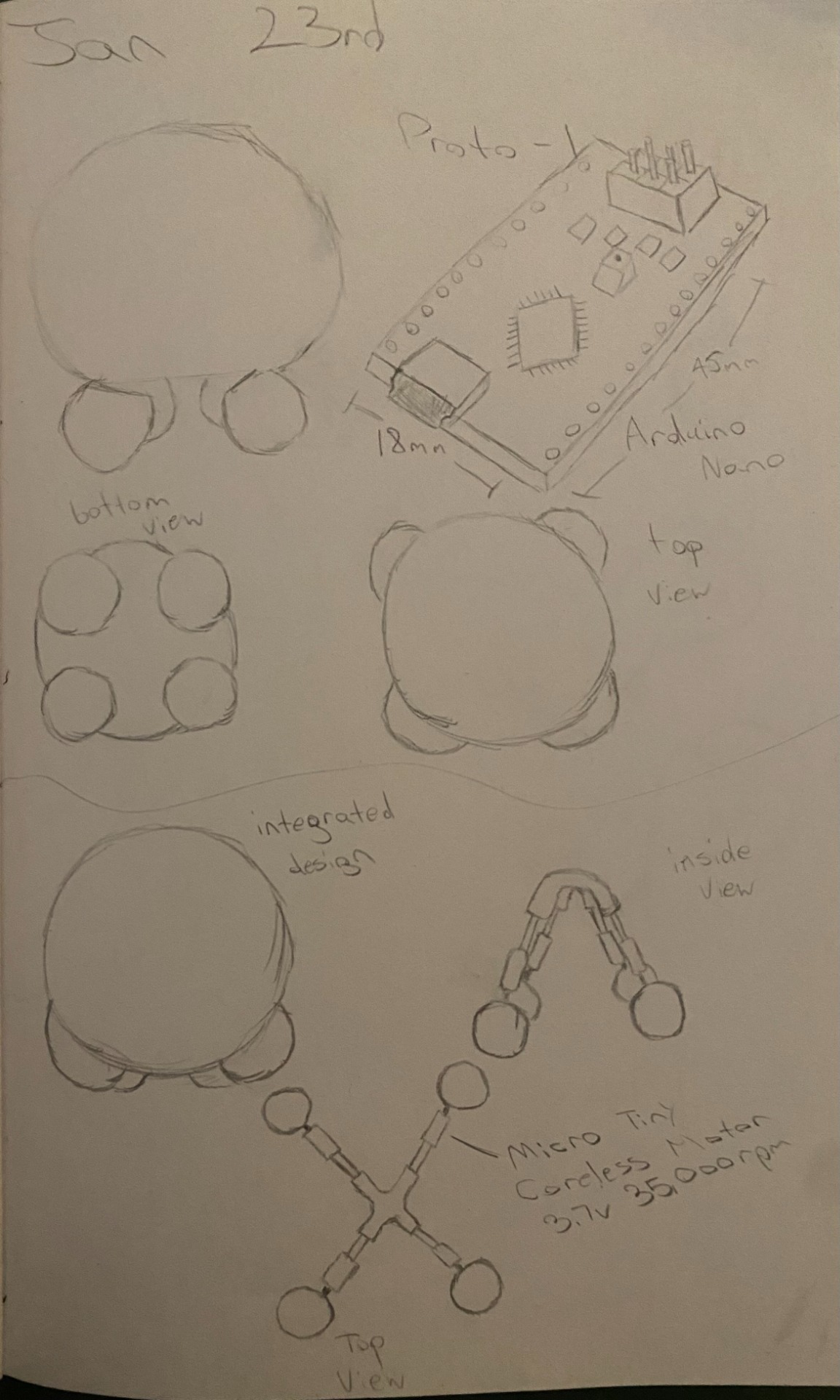
A previous machine that inspired this design was created in 2012 by a Lego Engineer. However, for this modified design, I used smaller motor and microcontroller components so it would fit neatly in its shell.
My investigation for this design was if it became a quadruped, could it still serve its original function? If so, does it perform better or worse? Its functionality being omnidirectional movement.
Prototype 2
This Prototype is more complex as it has three degrees of freedom, moving along the X and Z axis and rotating on the Z axis. As you may already have noticed, this concept uses two gearboxes in each leg. For each gearbox is a servo motor and one 3.7V 35,000rpm micro tiny motor attached to the wheel. Per the previous prototype, the microcontroller and power supply are kept in the center shell.
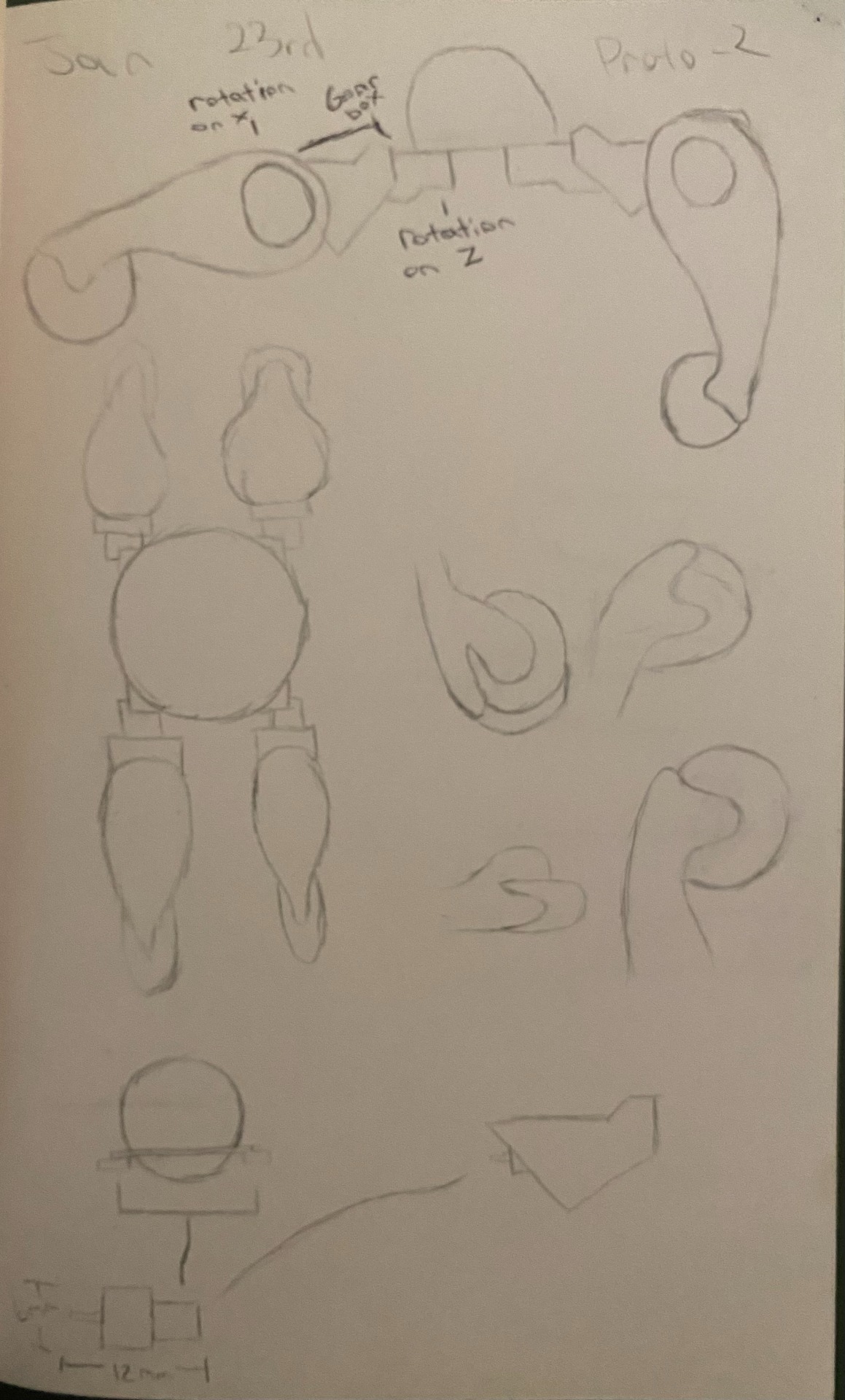
Unfortunately, I haven't finished scaling each part except the motors and microcontrollers, but it will be based on the microcontroller. Secondly, I haven't finished the circuitry for this prototype so I haven't picked the power supply yet.
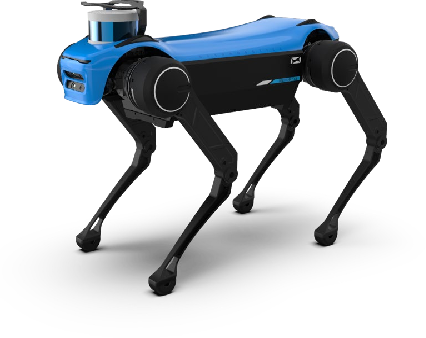
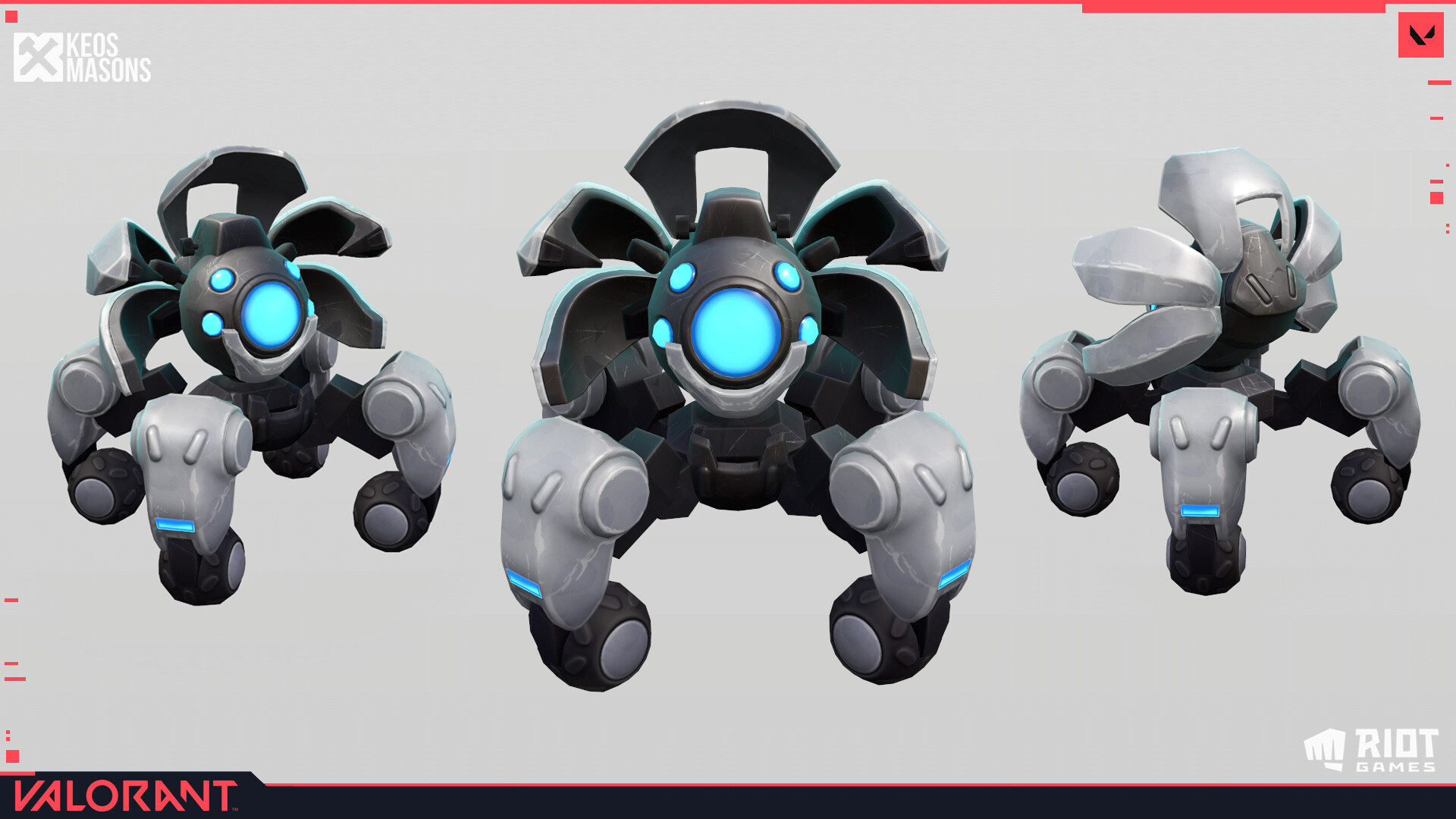
Prototype 2 is supposed to be a smaller version of The Jueying Mini quadruped robot(image on the left), similar in size to the killjoy alarm bot in Valorant. However, the alarm bot has roughly 5-6 degrees of freedom, which isn't possible at this time. So I adjusted the design to only 3 degrees for this prototype.
Prototype 3
Finally, the last prototype is an iteration of both previous prototypes, improving its original three degrees of freedom to four. These are translations in X, Y, and Z, with rotation in Z. The only change in design from Prototype 2 are the sphere wheels that rotate on X instead of Y. With one gearbox rotating a leg on Z and the other rotating the knee on Y, this makes four degrees of movement.
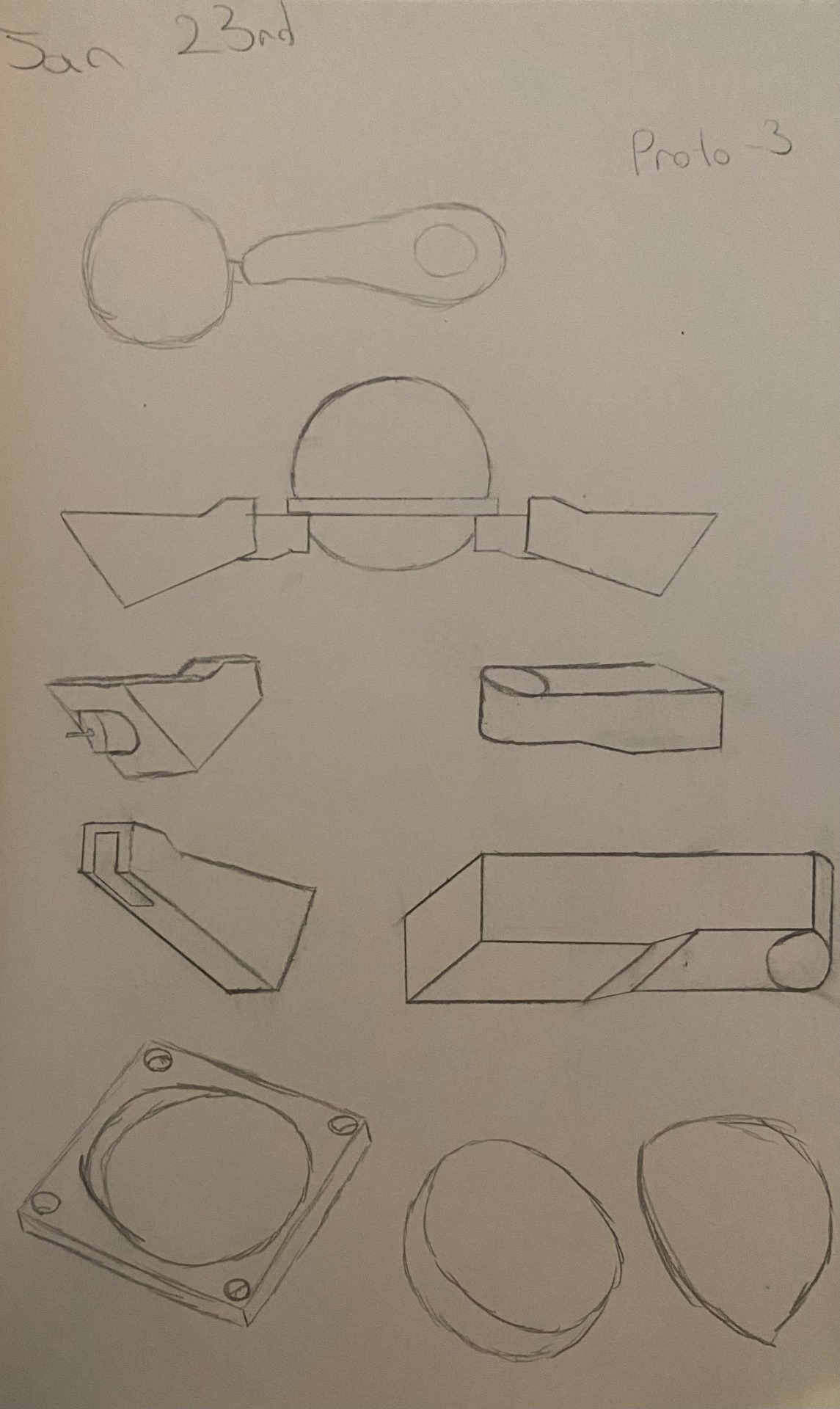
The above depiction is just a further breakdown of each component, so they might be measured, scaled, and placed into Solidworks.